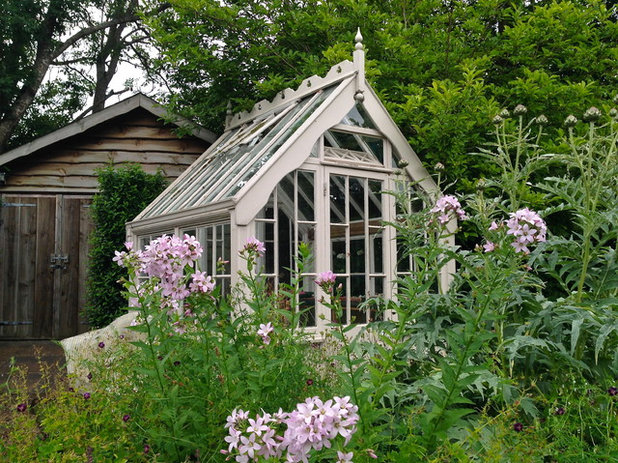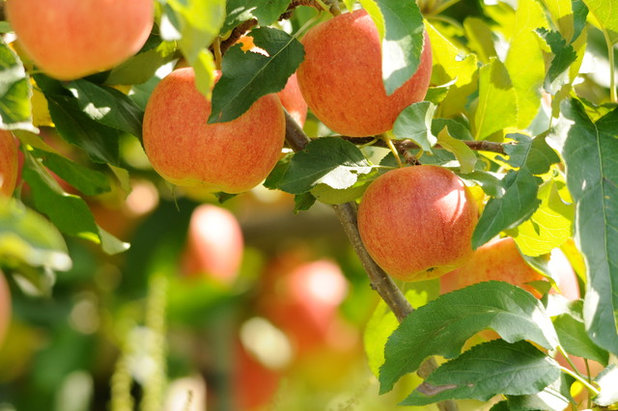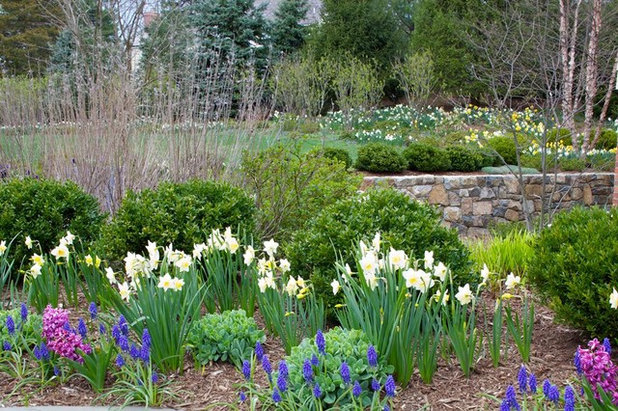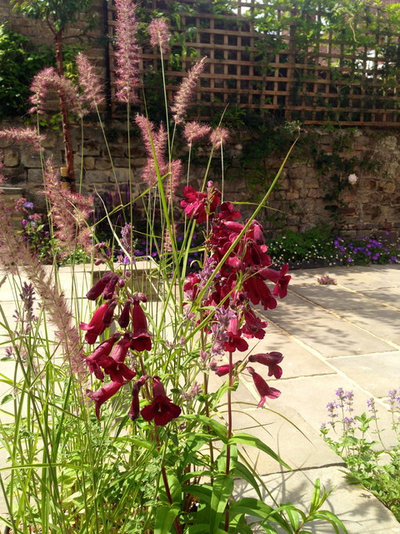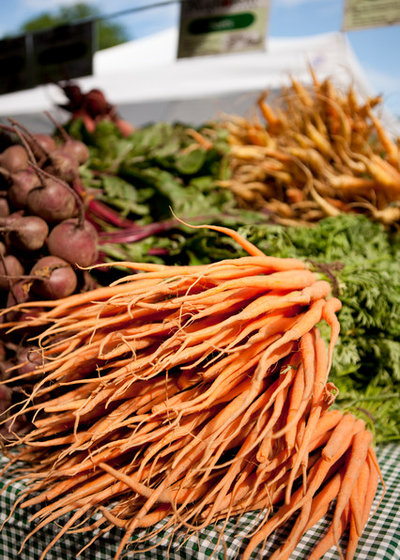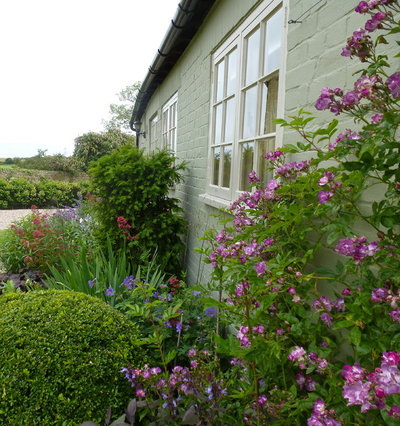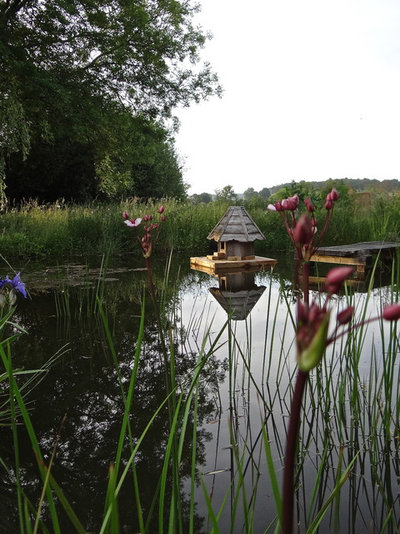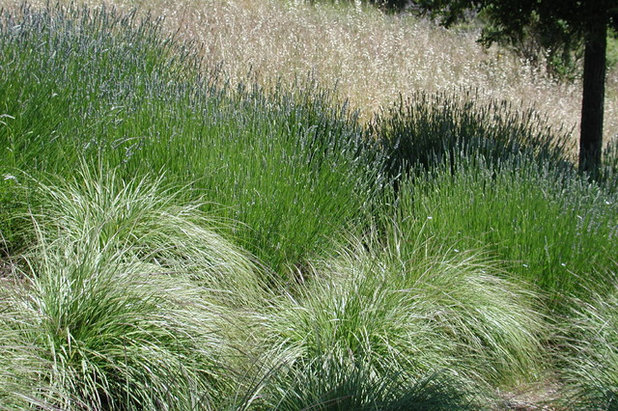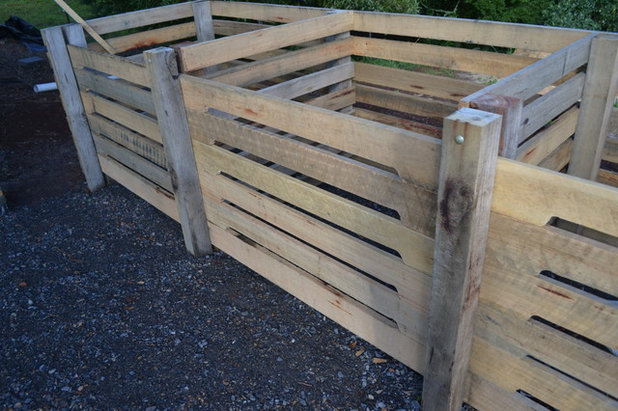Ask a garden designer: What to do in the garden in September - As the nights start to draw in and the morning dew becomes heavier, the garden has a hint of fall on it but this month is one of the most active in the gardening calendar. The abundance of apples, pears and vegetables ad collection harvesting and storage of the product for the winter months, and it is also time to plant bulbs for a colorful display next year.
Claudia De Yong Garden Design
Make use of a greenhouse
If you have an unheated greenhouse, you can still grow beautiful plants, especially Alpines who hate being wet, but do not mind the cold. In fact, if you keep the airy greenhouse during the winter, many plants even bushes, benefit from being immune.
cyclamen Hardy brighten the dullest of days under glass and winter-flowering shrubs such as Viburnum x bodnantense 'Dawn', that wonderful feeling, is well under glass for the first year . If you visit the garden center you will see a large number of plants doing well in cold greenhouses during the winter, so take note of what you might develop.
If you have an unheated greenhouse, you can still grow beautiful plants, especially Alpines who hate being wet, but do not mind the cold. In fact, if you keep the airy greenhouse during the winter, many plants even bushes, benefit from being immune.
cyclamen Hardy brighten the dullest of days under glass and winter-flowering shrubs such as Viburnum x bodnantense 'Dawn', that wonderful feeling, is well under glass for the first year . If you visit the garden center you will see a large number of plants doing well in cold greenhouses during the winter, so take note of what you might develop.
Putney Design
harvest carefully
Continue to reap the fruits ripen on the trees and bushes. Some varieties will not be ready in October, but for fruit which are handled with care to avoid bruising, which affects their storage qualities.
Do not store fruit stained. Apples are better individually wrapped in old newspapers and placed on gratings trays in a single layer. Pears are better left unopened. Beware of wasps on damaged fruits so you do not get a nasty surprise!
Fall fruiting raspberries will be ready at the end of the month. Once you've chosen, do not prune the canes until the end of the winter or early spring.
Continue to reap the fruits ripen on the trees and bushes. Some varieties will not be ready in October, but for fruit which are handled with care to avoid bruising, which affects their storage qualities.
Do not store fruit stained. Apples are better individually wrapped in old newspapers and placed on gratings trays in a single layer. Pears are better left unopened. Beware of wasps on damaged fruits so you do not get a nasty surprise!
Fall fruiting raspberries will be ready at the end of the month. Once you've chosen, do not prune the canes until the end of the winter or early spring.
Todd Group
plant spring bulbs
This is the month for planting flower bulbs next year - outside of tulips, which are best left until November.
Try to plant several bulbs, such as ornithogalum, a beautiful white flower star shaped with a green, or the beautiful little scilla bright blue, which looks wonderful in mass as the hyacinth makes grapes (muscari).
Bulbs look Naturalisation particularly good in the grass. For an informal drift disperse through an area and plant them where they land, the two to three times their own depth.
Do not forget that some spring plants are grown instead of corms, including, for example, Anemone Blanda . You will need to remember where you plant them, because they can look like small pieces of ground shriveled initially - easy to dig accidentally
This is the month for planting flower bulbs next year - outside of tulips, which are best left until November.
Try to plant several bulbs, such as ornithogalum, a beautiful white flower star shaped with a green, or the beautiful little scilla bright blue, which looks wonderful in mass as the hyacinth makes grapes (muscari).
Bulbs look Naturalisation particularly good in the grass. For an informal drift disperse through an area and plant them where they land, the two to three times their own depth.
Do not forget that some spring plants are grown instead of corms, including, for example, Anemone Blanda . You will need to remember where you plant them, because they can look like small pieces of ground shriveled initially - easy to dig accidentally
[19459026!]
Paolo Moschino for Nicholas Haslam Ltd
Air lawn
mowing become less frequent from now on and, in the end, the work of the lawn should first remove any thatch or dead grass that has built over time. Leaving will restrict movement of air and cause drainage problems and the growth of moss and weeds. You can use a rake spring to slide off or a scarifier lawn engine (which eliminates lawn cuttings and moss, and cuts through the grass) for large areas. The lawn will look a mess for a while, but will soon recover.
After that, you can aerate the lawn by pushing in a range approximately 6in to 6-9in intervals. Follow this with a top dressing - a mixture of earth sifted garden, dry sand and compost sieved garden. You can add grass seed if the lawn is a little worn.
Check out some beautiful ways to go free grass
mowing become less frequent from now on and, in the end, the work of the lawn should first remove any thatch or dead grass that has built over time. Leaving will restrict movement of air and cause drainage problems and the growth of moss and weeds. You can use a rake spring to slide off or a scarifier lawn engine (which eliminates lawn cuttings and moss, and cuts through the grass) for large areas. The lawn will look a mess for a while, but will soon recover.
After that, you can aerate the lawn by pushing in a range approximately 6in to 6-9in intervals. Follow this with a top dressing - a mixture of earth sifted garden, dry sand and compost sieved garden. You can add grass seed if the lawn is a little worn.
Check out some beautiful ways to go free grass
Claudia Yong Garden design
Tends to perennials
Here are three things to do to perennials this month.
1 Keep them deadheading to prolong flowering. Plants such as Penstemon, dahlias and delphiniums should be deadheaded regularly, and you'll be rewarded with new flowers for many weeks to come.
2 new perennials plants, as the soil is still warm and humid enough for the roots to establish themselves before winter. Give new plants a good soak before planting and mulch around them when planted to keep moisture in the soil.
3 Divide clumps of perennials that grow old and naked in the center. Use two forks if you can and the price through the clumps, pulling gently. Trim excess foliage and replant new small clumps in the ground that was well prepared with organic materials. Groups of three or five look better -. And be sure to water well
Here are three things to do to perennials this month.
1 Keep them deadheading to prolong flowering. Plants such as Penstemon, dahlias and delphiniums should be deadheaded regularly, and you'll be rewarded with new flowers for many weeks to come.
2 new perennials plants, as the soil is still warm and humid enough for the roots to establish themselves before winter. Give new plants a good soak before planting and mulch around them when planted to keep moisture in the soil.
3 Divide clumps of perennials that grow old and naked in the center. Use two forks if you can and the price through the clumps, pulling gently. Trim excess foliage and replant new small clumps in the ground that was well prepared with organic materials. Groups of three or five look better -. And be sure to water well
The New York Botanical Garden
Start lifting the root vegetables
Turnips, beets and carrots can all be lifted and stored during the winter. You can leave parsnips in the ground, even if, as some people say they taste better when some gel obtained from them.
If you store root vegetables, look for those that are in good condition because they can spread the disease otherwise. To store, place vegetables in a box in a frost place, the layer in the sand, which prevents them from drying out too much, and keep the dark, which discourages growth. Keep checking to ensure that no rot and you'll vegetables grown for many months to come.
Be inspired by a small urban garden that provides enough fruits and vegetables for the family all year
Turnips, beets and carrots can all be lifted and stored during the winter. You can leave parsnips in the ground, even if, as some people say they taste better when some gel obtained from them.
If you store root vegetables, look for those that are in good condition because they can spread the disease otherwise. To store, place vegetables in a box in a frost place, the layer in the sand, which prevents them from drying out too much, and keep the dark, which discourages growth. Keep checking to ensure that no rot and you'll vegetables grown for many months to come.
Be inspired by a small urban garden that provides enough fruits and vegetables for the family all year
Claudia De Yong Garden design
Start pruning climbing roses
Your climbing roses are ready to be pruned when you see the flowers started to disappear - if they are not there yet, you can wait until next month.
Remove any diseased or dead wood, cut at an angle, you should always do when pruning to prevent water from entering the cutting zone, then tie in all the shoots that are left and come from the base. If you have a rose that is showing no basal stems coming, then you should prune all existing side shoots back to two or three buds or leaves.
Your climbing roses are ready to be pruned when you see the flowers started to disappear - if they are not there yet, you can wait until next month.
Remove any diseased or dead wood, cut at an angle, you should always do when pruning to prevent water from entering the cutting zone, then tie in all the shoots that are left and come from the base. If you have a rose that is showing no basal stems coming, then you should prune all existing side shoots back to two or three buds or leaves.
Claudia De Yong Garden Design
thin on congested pond plants
You may find that many plants have taken over your pond, covering most of the water. When you delete a plant, leave it on the side of the pond for a day or for any wildlife to crawl before.
Then, as with any other perennial plants you can cut in half or divide, ensuring that each piece has a good root system. Repot with the aquatic soil covered with a layer of pebbles. Do not worry if the plants have many roots coming out the bottom of their baskets - you can quite happily slice and the plants will be well.
If you have a pond near trees and generally net, it comes the fall, you can start making it to the end of the month, especially if you have fish, such as decaying leaves produce toxic gases, which can be deadly for wildlife as they decompose.
You may find that many plants have taken over your pond, covering most of the water. When you delete a plant, leave it on the side of the pond for a day or for any wildlife to crawl before.
Then, as with any other perennial plants you can cut in half or divide, ensuring that each piece has a good root system. Repot with the aquatic soil covered with a layer of pebbles. Do not worry if the plants have many roots coming out the bottom of their baskets - you can quite happily slice and the plants will be well.
If you have a pond near trees and generally net, it comes the fall, you can start making it to the end of the month, especially if you have fish, such as decaying leaves produce toxic gases, which can be deadly for wildlife as they decompose.
Blasen Landscape Architecture
Go to grass
grass really come into their own as of September and fill the void in many borders. They work very well with many perennials such as echinacea, perovskia, anemone, rudbeckia, and Helianthus, for example.
Do not be tempted to cut the grass down, even if they seem a little sad or windswept, as they continue to maintain the border all through the autumn and winter, extending interest, and some look wonderful in jellies. There are many choices and they look good in groups or distributed among the perennials.
grass really come into their own as of September and fill the void in many borders. They work very well with many perennials such as echinacea, perovskia, anemone, rudbeckia, and Helianthus, for example.
Do not be tempted to cut the grass down, even if they seem a little sad or windswept, as they continue to maintain the border all through the autumn and winter, extending interest, and some look wonderful in jellies. There are many choices and they look good in groups or distributed among the perennials.
Steve Lick Timberworks
DIY your own composter
Make a compost bin for all your fall debris. It's easy to make your own garden compost in the fall on the road, dead leaves and cut soft stems will rot, providing a rich environment to return to garden soil.
You can easily build a compost bin - and it does not have to involve as carpentry as illustrated here. Just set four sturdy vertical poles in the ground in a square, about 2.5ft apart. Attach the wire chicken with three sides, leaving the open before.
Add the cardboard inside and gradually layer garden waste (not woody substance) , the cut grass and kitchen waste, mix in the well and cover with a bit of old carpet. Turn regularly and in no time you will have beautiful garden homemade compost. No need to drag enormous bags back garden center more!
TELL US ...
What will you do in your garden this month -this? Let us know and share your photos in the comments below.
Make a compost bin for all your fall debris. It's easy to make your own garden compost in the fall on the road, dead leaves and cut soft stems will rot, providing a rich environment to return to garden soil.
You can easily build a compost bin - and it does not have to involve as carpentry as illustrated here. Just set four sturdy vertical poles in the ground in a square, about 2.5ft apart. Attach the wire chicken with three sides, leaving the open before.
Add the cardboard inside and gradually layer garden waste (not woody substance) , the cut grass and kitchen waste, mix in the well and cover with a bit of old carpet. Turn regularly and in no time you will have beautiful garden homemade compost. No need to drag enormous bags back garden center more!
TELL US ...
What will you do in your garden this month -this? Let us know and share your photos in the comments below.
